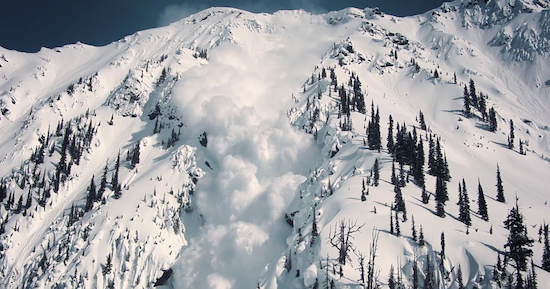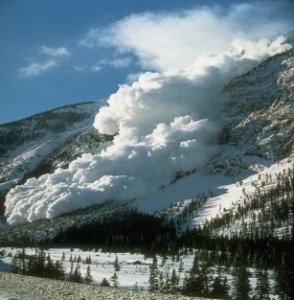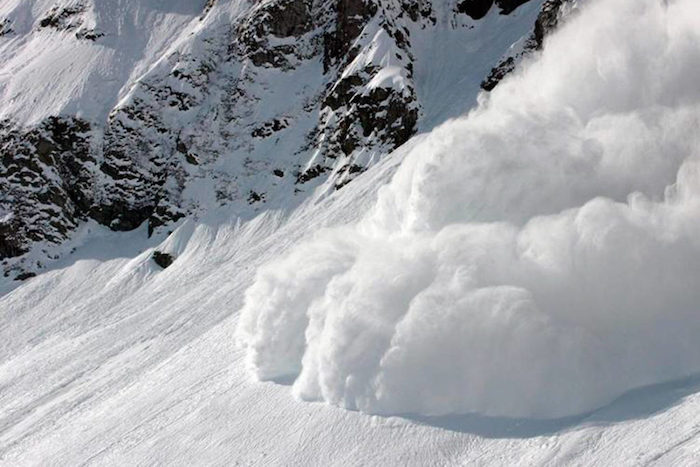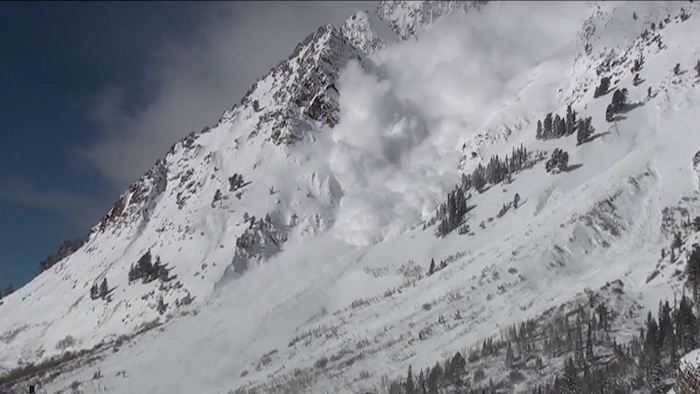(The following is based on a webinar with a panel of experts, sponsored by the North American Snowsports Journalists Association in collaboration with the BRASS Avalanche Foundation.)
It’s the end of November, and the pandemic has been going on for about a thousand years. I’m only half joking; truly, it seems like forever. But let’s take a walk down Memory Lane. Think back, if you can, to when it all began. Remember how the ski areas shut down? Remember how disappointed we all were? And remember what happened next?
Skiers flocked to the backcountry in droves.
One can hardly blame them. Unlike ski resorts, the backcountry is always open. And this coming season, with the pandemic making resort closures a distinct possibility and capacity limits a real issue, the backcountry is looking more attractive than ever.
Is this a good thing? If last spring is any indication, more skiers in the backcountry can mean a lot more problems. According to Mark Staples, Director of the Utah Avalanche Center, March and April were a bit crazy. “We had two big storms a few weeks apart,” he said, “And everywhere you looked on social media, it seemed like people were triggering avalanches. Here in Utah, we had about 50 human-triggered avalanches in about 48 hours.”
It’s no wonder that Mark is concerned about this coming winter. “We’ve all seen the increase in trailhead usage over the summer, and rightfully so,” he said. “We want to get out and the backcountry is the one place that’s remained open. But the winter environment is very, very unforgiving. So if we take all those people who were out this summer and throw them out this winter, it’s going to get interesting. I worry a lot of people are going to get hurt.”
Steve Berlack of the BRASS Avalanche Foundation agrees. “The pandemic has supercharged our concerns, as people equate proper social distancing with outdoor activity. You may indeed be safer outside than sitting in a ski lodge, but a whole cadre of objective dangers awaits you in the backcountry. We’ve seen this all summer here in the White Mountains. Trailhead parking is packed by 6 AM, overflow parking is teeming down the road, hikers with limited ability, knowledge, and equipment are stressing out safety service personnel as they call for help. It’s not going to be any less of a concern, and only more difficult, this winter. ”
A growing market
The emergence of backcountry skiing isn’t really new. According to Nick Sargent, president of Snowsports Industries America, the trade organization for equipment producers and retailers, sales of backcountry skis, boards, bindings and boots have been steadily increasing, up 103% over the past four years — and that was before the pandemic. In the ’19-’20 season, sales of alpine touring equipment climbed 15%, marking the largest increase among sales of alpine skis, winter accessories and snowboards. With the pandemic, sales have grown even stronger. In the month of March, alone, alpine touring equipment sales grew 34%, and high sales are expected to continue.
Just how dangerous is backcountry skiing?
Despite its growing popularity, skiing in the backcountry carries a lot more risk than skiing inbounds. And it’s not just because of avalanches, which kill around two dozen skiers and snowboarders a year across the US and Canada. This is only part of the picture. Ski a resort, and you’re in a fairly controlled environment. You’re protected by patrollers, who conduct avalanche control and spend months training in first aid and rescue techniques. There are signs and maps to keep you on course, and groomers to keep the slopes smooth and obstacle-free. If you get injured, a patroller can be at your side within minutes to take you down the hill on a sled. And once you’re down, paramedics and medical personnel are available to take care of you — even transport you to a hospital via helicopter, should that be needed.
None of this exists in the backcountry. Instead, you’re your own avalanche forecaster, guide, gear technician, and EMT. If something goes wrong, you have no one to rely on but yourself.
“A lot of people look at backcountry skiing and think it’s easy,” said Matthew Smith, backcountry training expert and critical care flight paramedic in British Columbia, “It’s called the Instagram Effect. This is partly due to manufacturers and partly professional athletes. People see things on Instagram and think it’s attainable for them, not realizing it involves a professional athlete. That’s how they get into trouble.”

Avalanches kill around 24 people each year in the US and Canada.
Reducing your risk
Unlike sports like scuba diving that require certification, anyone can head into the backcountry. It’s this lack of training that can cause problems. All the experts agree that education is key to safer backcountry skiing — not just for beginners, but for those with experience, too.
According to Matthew Smith, training should be a four-pronged approach. “First, you need an avalanche safety course. This is essential,” he said. “Then you have to take a proper wilderness first aid course that’s geared for your specific activity. And third, you need technical knowledge. You need to learn about weather; we have a lot of inclement weather here [in British Columbia], so it’s easy to get inside the ping pong ball pretty quickly, where the ceiling drops and you’re walking around in the fog for a day or two. You also need a good understanding of your gear. We’ve had instances with search and rescue activation, where people are severely hypothermic because they just didn’t take proper care of their gear and got soaking wet. And finally, you have to learn to leave no trace. We’ve seen pristine alpine environments damaged and almost destroyed by user traffic. So this is important, too.”
So is this a once and done deal? Mark Staples says no. “The biggest misconception is that you can take a class and you’re ready to go. It’s a years long process and most of the people I know who are experts in the field tend to be the ones who say ‘I’ve learned that I don’t know a lot.’ Through the years, a lot of people get very conservative because avalanches are spooky.”
Where to go for backcountry training.
Right now the demand for live backcountry courses is huge, and many have long waiting lists. So if it’s something you’re interested in, don’t wait — sign up today. If you’re unable to score a live class, online classes are also available.
Here are some resources you can check for backcountry and avalanche awareness training:
• Utah Avalanche Control Center: UAC’s Know Before You Go curriculum has become the industry standard in avalanche education, and is used both nationally and internationally. There’s a complete list of both on-line and in-person classes on the UAC site. Click on the Education link at the top of the home page.
• Avalanche.org: Here you can access American Avalanche Association endorsed course providers by state.
• BRASS Avalanche Foundation: Presented by a certified avalanche safety instructor, BRASS 101 includes a free 90-minute webinar, an intro to avalanche safety featuring Know Before You Go content, and a Q&A with the instructor.
• SheJumps.org: Offers outdoor education courses specifically geared towards women.
• REI.com: Offers a full slate of outdoor education courses, including Backcountry Navigation, Wilderness Survival, Backcountry Self Reliance, and more.
• Colorado Avalanche Information Center: In addition to offering Know Before You Go curriculum, the CAIC offers in-person instruction on avalanche survival, rescue techniques, weather forecasting, and more.
Watch this.
Steve Berlack founded the BRASS Foundation after his son, Ronnie, a member of the US Ski & Snowboard Development Team, was killed in an avalanche in Soelden, Austria, in 2015. The Foundation produced a video about the incident that is truly eye-opening. If you have any doubts about getting educated, I urge you to watch this. Fair warning, though: it’s a bit hard going, so be prepared.



